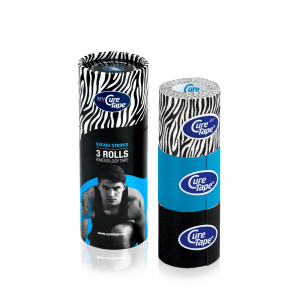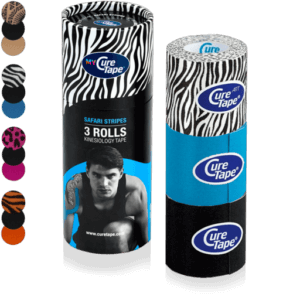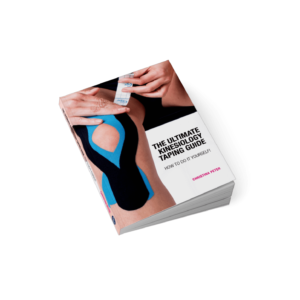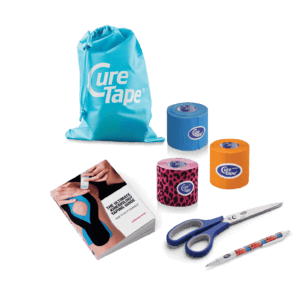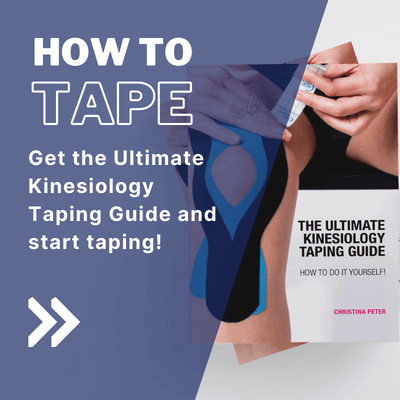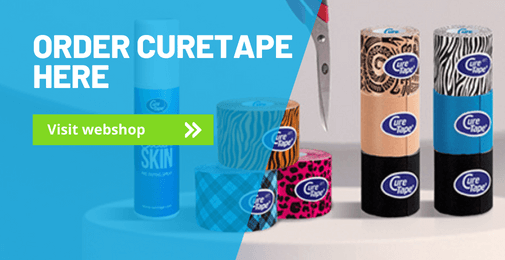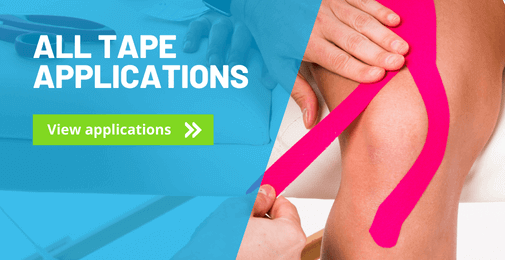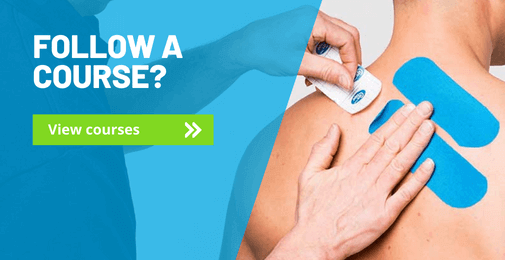Want to know how to easily stabilise your knee yourself using tape? In this page, we are going to explain step-by-step how to do this.
The following technique is great for complaints around the kneecap and the entire knee. This taping application supports the knee and makes movement easier.
How to tape your knee for stabilisation
Tips for a good knee taping application
- Is the cause of the complaint or pain clear?
- Check if there any contraindications for not taping.
- Before you start taping, carefully read the instructions.
- Choose a colour of tape, any colour that fits your mood!
- Round of all the edges to prevent peeling.
- Do not stretch the tape at the beginning and the end.
- Rub the tape well for adhesion. Heat activates the adhesive layer.
- Showering or swimming is possible, pat the tape dry after it gets wet. Do not rub it hard.
- It is easier to remove the tape with body or massage oil.

Christina’s advice when taping your knee
In the self-taping instructions, I have chosen taping applications that are easy to apply yourself. In order to make this treatment safe, I give practical tips, which you should take into account before, during and after a tape treatment. They are based on my years of practical experience. If the complaints persist, always consult a therapist or doctor.
Preparation for taping the knee for stabilisation
Tape
Shape: I-Tapes.
Number of strips: 3.
Technique: Muscle technique (light pull) + ligament technique(maximum/full stretch).
Measuring and cutting the tape
Step 1:
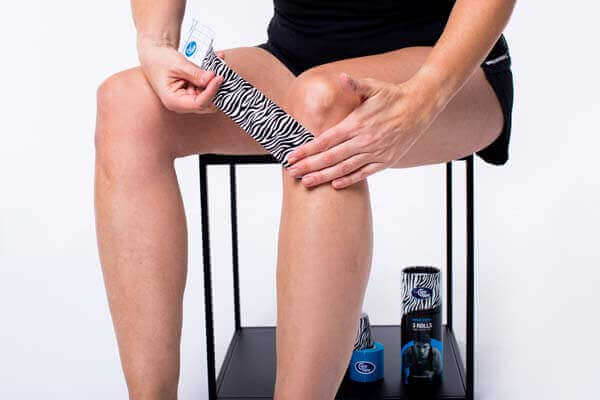
- Sit on a chair with the knee bent and measure two tapes from below the kneecap to mid-thigh.
- The third tape should be approx. 15 cm long.
Application of the tape to the knee
Stap 1:
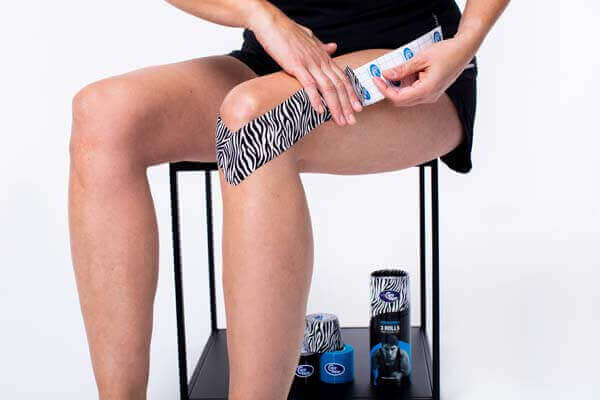
Stap 2:
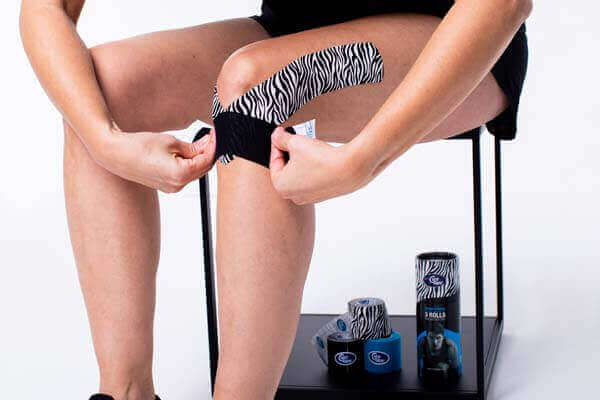
Stap 3:
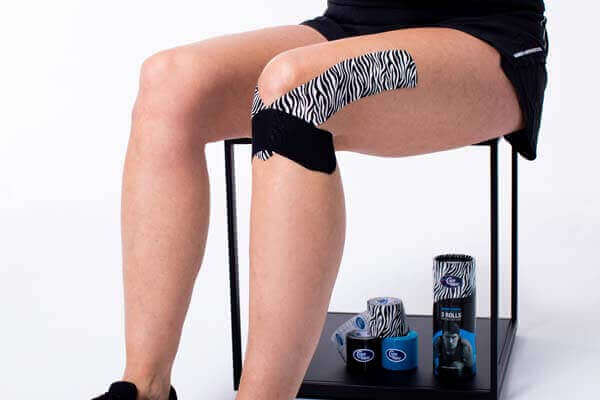
- The knee must remain bent during the application of the tape.
- Place the base of the first tape at the side under the kneecap without stretching.
- Apply the tape with a slight stretch towards the outer thigh.
- Repeat with the second tape, which begins on the inside of the kneecap and goes to the inside of the thigh.
- Rub the two tapes together.
- Tear the release paper from the third tape in the middle, and apply the middle piece with maximum stretch directly under the kneecap.
- Allow the two ends to extend without stretching, gently rubbing the tape. Make sure that the two ends do not end in the hollow of the knee.
This tape application is intended to support and relieve the knee. If the symptoms do not improve, you can alternatively apply the tape for knee pain in general.
Learn how to tape
- 30 taping instructions for common injuries that taping can help you with
- 176 pages of clear written instructions
- 200 step-by-step instructions accompanied by photo’s, illustrations and scannable video’s through QR codes
What are you waiting for? Order your copy today!
*This book is intended for people who want to tape an injury or complaint themselves. If uncertain about the complaint, consult a physiotherapist.
THYSOL is the manufacturer of the kinesiology tape brand CureTape. As CureTape, we have been training and supplying professionals for almost 25 years. And consumers now know how to find us too! By manufacturing all our tapes in our own factory, we can guarantee the best quality!
Please note that the indicated tape applications and information on our website about the possibilities with kinesiology tape have not yet been scientifically proven. The statements and examples mentioned are based on long-term experiences of patients and trained therapists.
Contraindications not to tape: pregnancy, open wounds, broken bones, unexplained complaints, allergies and skin diseases, use of medication such as blood thinners, thrombosis and fever. Always apply tape in consultation with a specialist.

